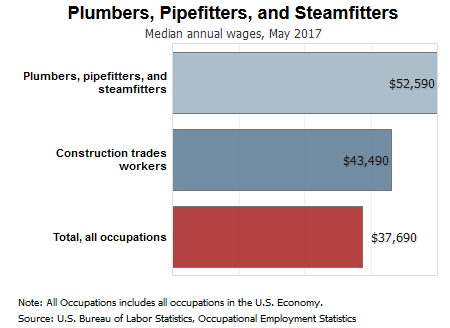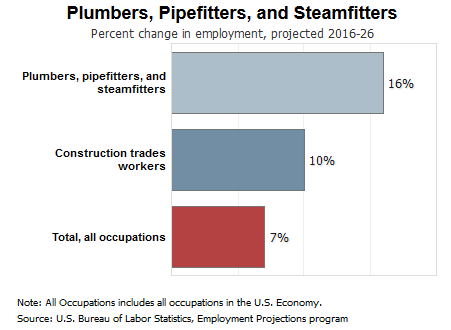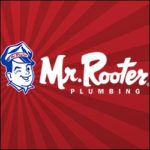Duties
Plumbers, pipefitters, and steamfitters typically do the following:
- Prepare cost estimates for clients
- Read blueprints and follow state and local building codes
- Determine the material and equipment needed for a job
- Install pipes and fixtures
- Inspect and test installed pipe systems and pipelines
- Troubleshoot malfunctioning systems
- Repair and replace worn parts
The movement of liquids and gases through pipes is critical to modern life. In homes, water is needed for both drinking and sanitation. In factories, chemicals are moved to aid in product manufacturing. In power plants, steam is moved to drive turbines that generate electricity. Plumbers, pipefitters, and steamfitters install and repair these pipe systems.
Although plumbers, pipefitters, and steamfitters perform three distinct and specialized roles, their duties are often similar. For example, they all install pipes and fittings that carry water, steam, air, or other liquids or gases. They determine the necessary materials for a job, connect pipes, and perform pressure tests to ensure that a pipe system is airtight and watertight. Their tools include drills, saws, welding torches, and wrenches.
Plumbers, pipefitters, and steamfitters may use many different materials and construction techniques, depending on the type of project. Residential water systems, for example, use copper, steel, and plastic pipe that one or two plumbers can install. Power plant water systems, by contrast, are made of large steel pipes that usually take a crew of pipefitters to install. Some workers install stainless steel pipes on dairy farms and in factories, mainly to prevent contamination.
In addition to performing installation and repair work, journey- and master-level plumbers, pipefitters, and steamfitters frequently direct apprentices and helpers.
Master plumbers on construction jobs may be involved with developing blueprints that show the placement of all the pipes and fixtures. Their input helps ensure that a structure’s plumbing meets building codes, stays within budget, and works well with the location of other features, such as electric wires. Many diagrams are now created digitally with the use of Building Information Modeling (BIM), which allows a building’s physical systems to be planned and coordinated across occupations.
The following are examples of types of plumbers, pipefitters, and steamfitters:
Plumbers install and repair water, drainage, gas, and other piping systems in homes, businesses, and factories. Plumbers install plumbing fixtures such as bathtubs and toilets, and appliances, such as dishwashers and water heaters. Plumbers also maintain septic systems—the large, underground holding tanks that collect waste from houses that are not connected to a sewer system.
Pipefitters, sometimes simply called fitters, install and maintain pipes that carry chemicals, acids, and gases. These pipes are used mostly in manufacturing, commercial, and industrial settings. Fitters install and repair pipe systems in power plants, as well as heating and cooling systems in large office buildings. Some pipefitters specialize as gasfitters, sprinklerfitters, or steamfitters.
















